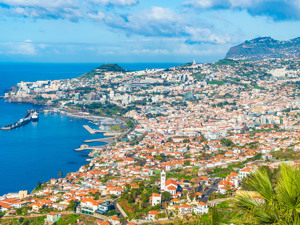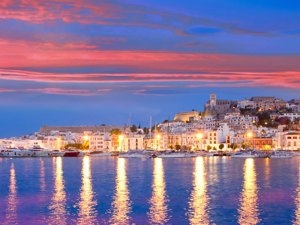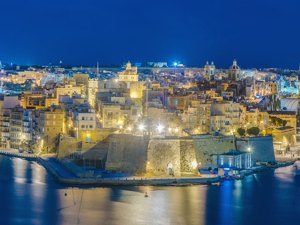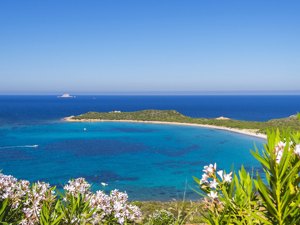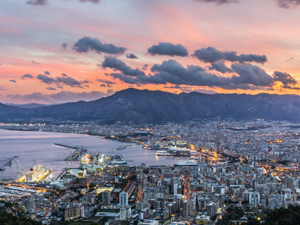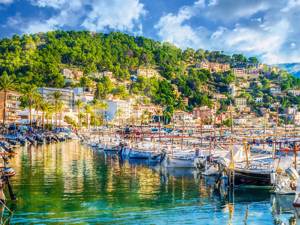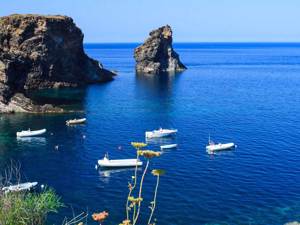Mediterranean Paradise of culture and beauty
The largest and the most southerly island in Greece, is one of the most popular and well-loved islands of the Mediterranean. It was home, from 2800 to 1450 BC, to the Minoans, who are considered to have created the first evolved civilisation in Europe: the palace of Knossos is the most important symbol of the Minoan civilisation. The very mild climate of the south coast of Crete makes swimming possible from April to November.

Photo: Sisterscom.com, Shutterstock
The most important city, Heraklion, is located in the centre of the north coast, which is the main area of tourist development, while the southern and western areas of the island are still relatively untouched.
The beaches in Crete
The island offers a wide variety of beaches along its entire coastal perimeter. The large sandy beach of Amoudara is located near the capital Heraklion and the beaches of Hersonissos, Gouves, Malia, Elounda, Aghios Nikolaos, Almyros and Sitia are found to the east; Vái is without doubt the most photographed and celebrated beach of the island. Located on the east coast, it is famous for its dense palm forest which extends to the shoreline. The beach of Matala, celebrated for its caves dug into the rock, is found in the south.

The beach of Vai. Photo: Sisterscom.com, Shutterstock
From Matala it is easy to reach the nearby archaeological sites of Phaistos, Hagia Triada and Gortyna, while the more secluded beaches of Kokkinos and Red Beach lie across the rocks. Chryssi island, just of the coast near Ierápetra, is a paradise of fine white sand.

Beach of Chryssi island. Photo: Sisterscom.com, Shutterstock
One of the most interesting excursions for lovers of unspoilt nature is to the island of Chryssi along the southern coast of Crete, approximately 13 km from Ierápetra. Known also as Gaidoronisi or the golden island, it has wonderful beaches, a small cedar wood and shallow, crystal-clear waters.
The beaches of Georgioupolis, Gramvoussa andFalassarna instead lie to the west of Heraklion. The beach of Elafoníssi with its rose-coloured sand is found on the far south-eastern tip of the island. The islet of Elafoníssi is separated from the shore by a lagoon of warm, turquoise-coloured water. The lagoon is shallow at low tide making it easy to wade across the knee-deep water to the island.
Minoan Palace of Knossos
Don’t miss a visit to the ancient Minoan Palace of Knossos, which stands on the outskirts of the capital Heraklion. Residence of the legendary king Minos, it is also site of the famous myth of the labyrinth of 2000 BC and was the political, economic and religious centre of the glorious Minoan dynasty.

Minoan Palace of Knossos. Photo: Sisterscom.com, Shutterstock
The Roman Amphitheatre and the Paleo-Christian Basilica of St. Titus dating back to 450 BC can be found Gortyna, the ancient Roman capital on the island.

Roman Amphitheatre of Gortina. Photo: Sisterscom.com, Shutterstock
The Cretan evening is an occasion for discovering the traditions, costumes and gastronomic specialities of the island. During an entertaining evening in a typical restaurant in a Cretan village, traditional Greek dishes are served accompanied by excellent wine with traditional music and dancing.
Crete keeps many of its rich folk traditions alive and preserves its cultural heritage. The Cretan dances (pentozalis, haniotikos, maleviziotikos) and the “madinades” and “rizitika” songs are still very much part of everyday life.
Text by Federica Fusco
Updated text by Nicolò Villa
Avion Tourism Magazine
Photo: Sisterscom.com, Shutterstock
All rights reserved. Copyright © Sisterscom.com
Photo: Sisterscom.com, Shutterstock
All rights reserved. Copyright © Sisterscom.com
Video: www.visitgreece.gr
Tourism Board
www.visitgreece.gr
Partnership with Booking.com
Where to sleep in Crete

Photo: Sisterscom.com, Shutterstock
Crete is a welcoming city and offers different possibilities for accommodation.
To find the ideal hotel and the best offers you can do a search for the stars but also for districts or landmarks.
LANDMARKS
Hotels in tourist areas
AIRPORTS
Hotels near the airports
where to go in crete
Museums in Crete
ARCHEOLOGICAL MUSEUM HERAKLION
The foundations for the Heraklion Archaeological Museum were laid in 1935 by the architect Patroklos Karantinos. Its purpose is to acquire, safeguard, conserve, record, study, publish, display and promote the Cretan cultural heritage from the Prehistoric to the Late Roman period. A temporary exhibition of 400 selected exhibits, some of the finest and most representative finds of each period, is on display in a specially designed wing at the northeast corner of the museum building.
Excursions in Crete

Photo: Sisterscom.com, Shutterstock
CHANIA
The region of Chania (Hania), on the western side of the Island of Crete, is dominated by the impressive White Mountains (in Greek: Lefka Ori) and its famous National Park, which occupy the largest part of the region. The Prefecture of Chania provides tourist services and activities of all kinds, satisfying all the choices. The city of Chania maintains unaltered all of its characteristics, from the time of the Venetian Rule up until today.

Photo: Sisterscom.com, Shutterstock
HERAKLION
The largest and most densely populated region on the Island of Crete is Heraklion (Iraklion). Nestling picturesquely among two imposing mountain ranges - Ídi (Mt. Psiloritis) to the west and Dikti (Lasithiótika mountains) to the east - Heraklion boasts exceptional archaeological treasures, significant coastal settlements, a series of picturesque villages, vast valleys with olive groves and vineyards. A unique combination of urban scenery and natural wealth makes the region of Heraklion an appealing all-year-round destination.

Photo: Sisterscom.com, Shutterstock
LASITHI
Lasithi region is the easternmost and least mountainous region of Crete, where the population resides in four semi-urban centers: Ayios, Nikolaos, Ierapetra, Sitia and Neapoli. The mythical palm tree forest of Vai, the Gulf of Mirabello, the windmills on the Plateau of Lassithi, beaches lapped by crystalline water, beautiful cities and luxurious resorts all make up a rather fascinating world.

Photo: Sisterscom.com, Shutterstock
KOULES FORTRESS
The city of Heraklion is renowned also for the Medieval Fortress of Koules overlooking the Venetian harbour and the Venetian walls that still surround a part of the city. At the southernmost bastion of the fortress, Martinengo Bastion, lies the tomb of Nikos Kazantzakis, the famous Cretan author, whose epitaph reads: “I believe in nothing, I hope for nothing, I am free”.

Photo: Sisterscom.com, Shutterstock
SAMARIA GORGE
Samaria Gorge (in Chania), is the biggest and most imposing gorge in Greece. You need about seven hours to cross it but the rich landscape and rare flora and fauna will definitely reward you. There are also many other smaller gorges for you to hike: Aradaina, Agia Irini, Imbros and Polyrhenia. In Chania there are also beautiful walking trails (from Hrysoskalitissa to Elafonissi, from Palaiohora to Souyia and from Ayia Roumeli to Hora Sfakion), which make the region a beloved destination among nature enthusiasts from all over the world.

Photo: Sisterscom.com, Shutterstock
SPINALONGA
Spinalonga (meaning long thorn), although it is small and known as the island of the outcasts, has a rather interesting story to tell. The island forms a natural defence “mechanism” for Elounda Harbour. Today thousands of tourists visit Spinalonga by boat from Ayios Nikolaos, Elounda and Plaka each summer as it is the most popular archaeological site in Crete due to its historical and significance. On the Island there are no accommodation facilities therefore the visit here can last only a few hours.
Partnership with GetYourGuide
Discover all tours
News & Useful info
You might be interested in
Other destinations
Airports nearby Crete
























